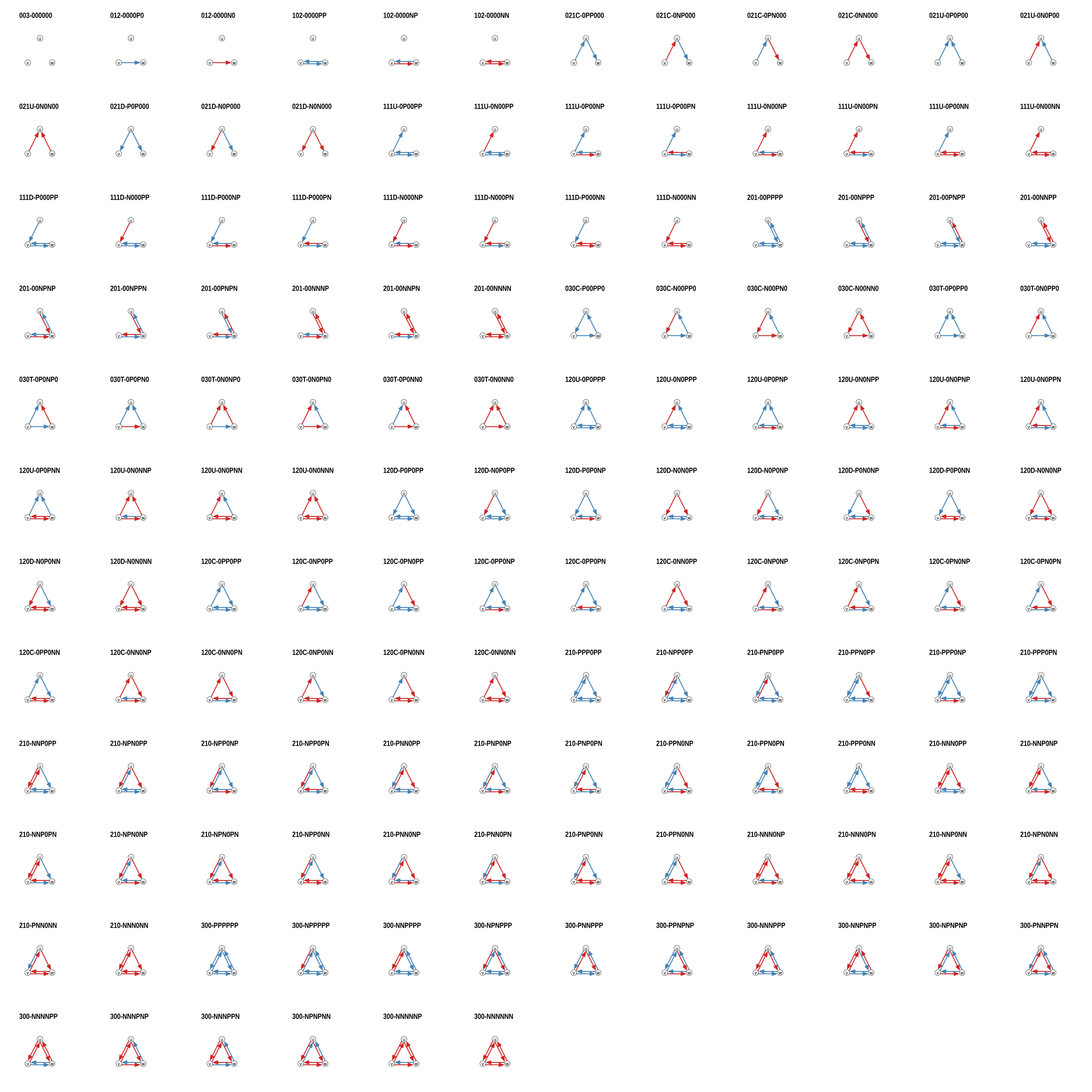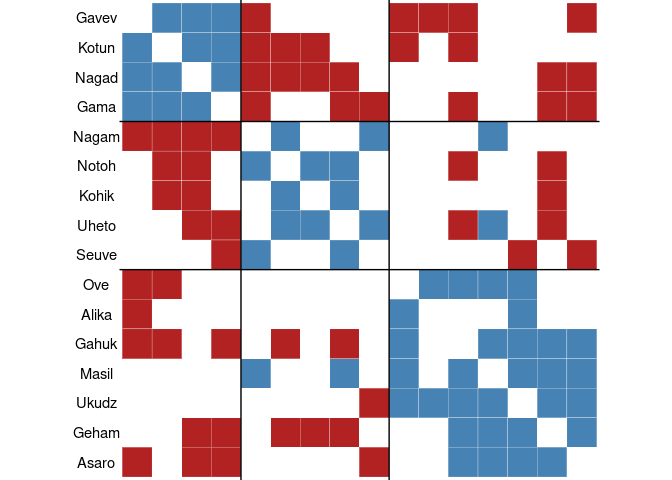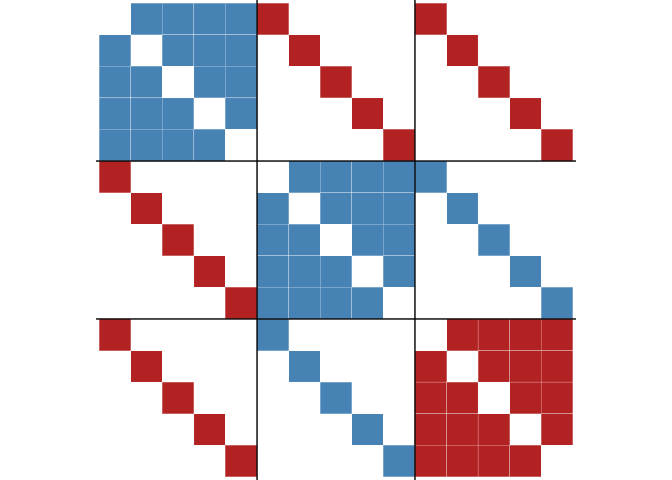
The hardware and bandwidth for this mirror is donated by dogado GmbH, the Webhosting and Full Service-Cloud Provider. Check out our Wordpress Tutorial.
If you wish to report a bug, or if you are interested in having us mirror your free-software or open-source project, please feel free to contact us at mirror[@]dogado.de.

The package provides methods to analyse signed networks (i.e. networks with both positive and negative ties).
You can install the released version of signnet from CRAN with:
install.packages("signnet")The development version from is available with:
# install.packages("devtools")
devtools::install_github("schochastics/signnet")The principles underlying structural balance are based on a theory in social psychology dating back to the work of Heider in the 1940s, which was generalized and extended to graphs by Cartwright and Harary in the 1950s. In its simplest form, it is defined via triangles. A triangle is balanced if all ties are positive (“the friend of a friend is a friend”) or only one tie is positive (“the enemy of my enemy is my friend”). The remaining configurations are said to be unbalanced.

A network is balanced if i.a., it can be partitioned into two vertex subsets, such that intra-group edges are all positive and inter-group edges are all negative. Determining this is easy, but measuring a degree of balancedness (i.e. how close is a network to be balanced?) is not. The package, so far, implements three methods to calculate balance scores. All are defined such that a value of one indicates perfect balance and zero perfect unbalance. Though for intermediate networks, results may vary significantly. Check this paper by Samin Aref (and his other work) for more details.
library(igraph)
library(signnet)
data("tribes")
balance_score(tribes, method = "triangles")
#> [1] 0.8676471
balance_score(tribes, method = "walk")
#> [1] 0.3575761
balance_score(tribes, method = "frustration")
#> [1] 0.7586207For directed signed networks, triad_census_signed() can
be used to compute the count for all 138 non-isomorphic signed triads.
(The code to reproduce this figure can be found in this
gist) 
The package implements two different blockmodeling algorithms. The classic one tries to partition the network into a specified set of groups such that intra group edges are positive and inter group edges are negative.
clu <- signed_blockmodel(tribes, k = 3, alpha = 0.5, annealing = TRUE)
clu
#> $membership
#> [1] 3 3 2 2 1 2 2 2 1 1 2 2 1 1 3 3
#>
#> $criterion
#> [1] 2The parameter k is the number of groups and alpha
specifies the penalty of negative inter group and positive intra group
edges. If alpha = 0 (alpha = 1) then only
positive inter group (negative intra group) edges are penalized. Set
alpha = 0.5 for equal penalization The algorithm is not
exact and just a heuristic. If annealing = TRUE, then
simulated annealing is used. This improves the result, but may take
additional time.
The result of the blockmodel can be visualized with
ggblock (requires ggplot2)
ggblock(tribes, clu$membership, show_blocks = TRUE, show_labels = TRUE)
The second blockmodeling technique is known as generalized blockmodeling. This method removes the restriction of positve (negative) inter (intra) group edges. Instead, a blockmatrix is passed to the function with the desired block structure. The example below illustrates the technique with a network composed of three groups with differing inter/intra group edge patterns.
# create a signed network with three groups and different inter/intra group ties
g1 <- g2 <- g3 <- make_full_graph(5)
V(g1)$name <- as.character(1:5)
V(g2)$name <- as.character(6:10)
V(g3)$name <- as.character(11:15)
g <- Reduce("%u%", list(g1, g2, g3))
E(g)$sign <- 1
E(g)$sign[1:10] <- -1
g <- add.edges(g, c(rbind(1:5, 6:10)), attr = list(sign = -1))
#> Warning: `add.edges()` was deprecated in igraph 2.0.0.
#> ℹ Please use `add_edges()` instead.
#> This warning is displayed once every 8 hours.
#> Call `lifecycle::last_lifecycle_warnings()` to see where this
#> warning was generated.
g <- add.edges(g, c(rbind(1:5, 11:15)), attr = list(sign = -1))
g <- add.edges(g, c(rbind(11:15, 6:10)), attr = list(sign = 1))
# specify the link patterns between groups
blockmat <- matrix(c(1, -1, -1, -1, 1, 1, -1, 1, -1), 3, 3, byrow = TRUE)
blockmat
#> [,1] [,2] [,3]
#> [1,] 1 -1 -1
#> [2,] -1 1 1
#> [3,] -1 1 -1
clu <- signed_blockmodel_general(g, blockmat, 0.5)
clu
#> $membership
#> [1] 1 1 1 1 1 2 2 2 2 2 3 3 3 3 3
#>
#> $criterion
#> [1] 0
ggblock(g, clu$membership, show_blocks = TRUE, show_labels = FALSE)
Simply open an issue on GitHub.
If you have an idea (but no code yet), open an issue on GitHub. If you want to contribute with a specific feature and have the code ready, fork the repository, add your code, and create a pull request.
The easiest way is to open an issue - this way, your question is also visible to others who may face similar problems.
Please note that the signnet project is released with a Contributor Code of Conduct. By contributing to this project, you agree to abide by its terms.
These binaries (installable software) and packages are in development.
They may not be fully stable and should be used with caution. We make no claims about them.
Health stats visible at Monitor.